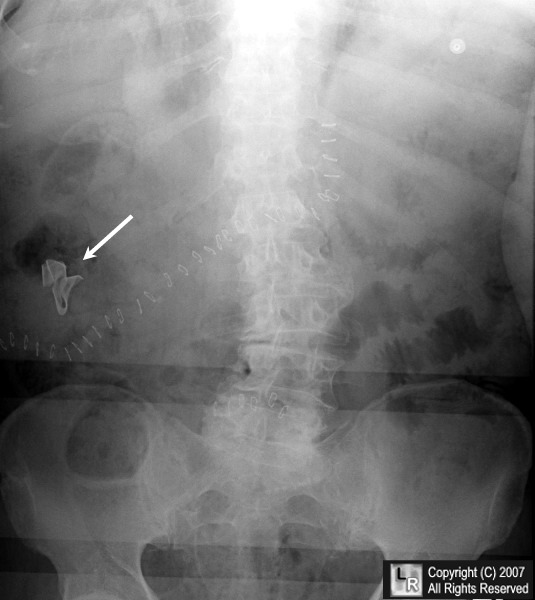|
|
Retained Sponge
Gossypiboma
General Considerations
- Retained surgical sponges are an uncommon event
- Medical term for a retained sponge is gossypiboma
- From Latin gossypium, for cotton, and
- Swahili boma, for place of concealment
- Surgical sponges are used for
- Removing excess fluid from the field
- Packing
- Retraction
- Dissection
- Studies have shown that they are more likely to be left during
- Emergency surgery
- Surgery on obese patients
- An unexpected change in surgical procedure
- OR personnel use sponge and instrument counts to prevent accidental closure of wound with retained foreign body
Pathophysiology
- Usually produce one of two responses
- Early foreign body response
- Active inflammatory response
- Body attempts to extrude the material
- Later fibrinous response
- More indolent
- Body creates adhesions and encapsulates the sponge
- Patients are at risk for pseudotumors and subsequent symptoms related to obstruction or presence of a space-occupying lesion
Clinical Findings
- Retained surgical instruments have remained undetected for long periods of time
- Symptoms can be due to
- Intestinal obstruction
- Fistula formation
- Bleeding
Imaging Findings
- Conventional radiographs are generally used as study of first choice for detecting surgical foreign bodies
- Sponge itself may be faintly visible on radiographs performed outside of the body but sponge will be visible inside the body because of its opaque marker
- All sponges commercially manufactured in the US contain radiopaque markers
- Either interwoven into sponge, or
- Part of an attached string
- Therefore, all such sponges should be visible on conventional radiography
Differential Diagnosis
- Sheets, clothes, overlying blankets will not have a radiopaque marker in them
Complications
- Abscess development
- Intestinal obstruction
- Fistula formation
These are links to three websites/articles with a gallery of images of the radiographic appearance of retained surgical materials:
RadioGraphics 2000
http://radiographics.rsnajnls.org/cgi/content/full/20/6/1665
AJR 2003
http://www.ajronline.org/cgi/content/figsonly/180/2/481
UCSF Website
http://www.radiology.ucsf.edu/instruction/abdominal/ret_objects7.shtml#1

Retained laparotomy sponge. The white arrow points to a radiopaque density that is
characteristic for the marker placed in a surgical laparotomy sponge in order to make it radiographically visible.
The sponge was removed and the patient had an uneventful recovery.
For additional information about this disease, click on this icon if seen above.
For this same photo without arrows, click here
Imaging of Surgical Paraphernalia: What Belongs in the Patient and What Does Not Wolfson K, Seeger L, Kadell B, and Eckardt J RadioGraphics. 2000;20:1665-1673
Retained instruments and sponges by Brian Camazine
Verna C. Gibbs, MD Department of Surgery University of California, San Francisco
|
|
|